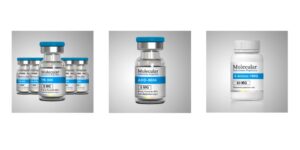
If there’s one thing that all too many aspiring plant owners do, it’s that they forget to water their favorite plants. After that, it’s forgetting to properly fertilize.
Yet water is water, and plant food is not all the same. Fertilizer varies significantly in chemical composition. The result is that some fertilizer blends are suitable for some cultivars, whereas others are not.
Have you ever looked at a bag of fertilizer and wondered what those three numbers mean? Commonly, generic fertilizer is stamped 10-10-10; but what are these numbers, and why are they so critical?
These numbers correspond to the fertilizer’s available content (in percentages) of the three most vital nutrients to plants: nitrogen, phosphorus, and potassium (otherwise known as NPK).
Here’s how it all breaks down.
Nitrogen (N)
Nitrogen is the single most important elemental nutrient in plant health. It is found in all plant cells from the roots all the way up to the chlorophyll in the leaves.
Nitrogen is essential because it is necessary for the formation of amino acids, which are themselves the fundamental building blocks of large organic molecules like proteins and enzymes that constitute complex tissues.
Chiefly, plants require nitrogen principally for above-ground, leafy growth. A plant that is not a healthy green or is not foliating sufficiently is likely nitrogen deficient.
Plants that are heavy feeders (like corn) typically need a lot of nitrogen. If they don’t get enough, they will experience a condition known as chlorosis or yellowing of the leaves. (Though it is also important to note that other factors can also cause this condition.)
Phosphorus (P)
Phosphorus is another vital plant nutrient and is most strongly implicated in root growth, health, and that new growth not only develops but matures in a timely manner.
Phosphorus also helps plants capture and transfer the sun’s energy in the synthesis of molecules necessary to develop healthy tissues in their roots and leaves. Phosphorus is an essential chemical constituent of ATP, or adenosine triphosphate, which cells use to transport energy.
Without adequate access to phosphorus, plants will mature slowly (or not mature at all) and will offer weaker crop yields. Plants that are phosphorus deficient often grow slowly and have deformed shoots or develop leaves that turn dark or dull.
Potassium (K)
Potassium is the final of the three key fertilizer numbers and is also an essential plant nutrient.
Potassium is perhaps the most important because it bolsters the natural disease resistance of a plant. Potassium-deficient plants are at the greatest risk of fungal, bacterial, viral, and parasitic infection.
Potassium is also implicated in the formation of complex sugars and starches that plants construct for energy storage, as well as in the production of essential oils that help strengthen the plant’s immune system. Potassium is also vital because it helps ensure a higher crop yield, just like phosphorus.
Plants that are potassium deficient might exhibit chlorosis, as plants that are nitrogen deficient; however, potassium deficiency may manifest instead as leaf curling, yellowing around the edges, or brown spotting.
Don’t Forget to Fertilize the Plants in Your Modern Outdoor Planters!
While these three nutrients are the ones that correspond, in order, to the NPK number on a bag of fertilizer, there are many other nutrients essential for plant growth, including iron, copper, nickel, and zinc, without which, plants will not flourish.
Understanding the nutritional needs of plants in modern outdoor planters is essential because plants which are effectively sequestered within planters will not have access to the nutrients that the earth would provide. Planting a plant in a plant stand or planter box is like keeping a fish in a tank; it has water, but without food, it will eventually die.
Make sure that you read up on the specific needs of the cultivars you’re growing in your modern outdoor planters so that you can fertilize them adequately!


